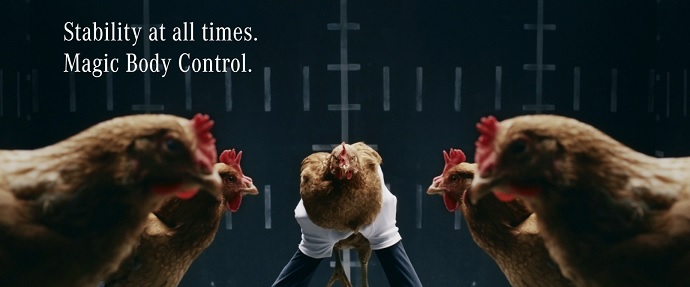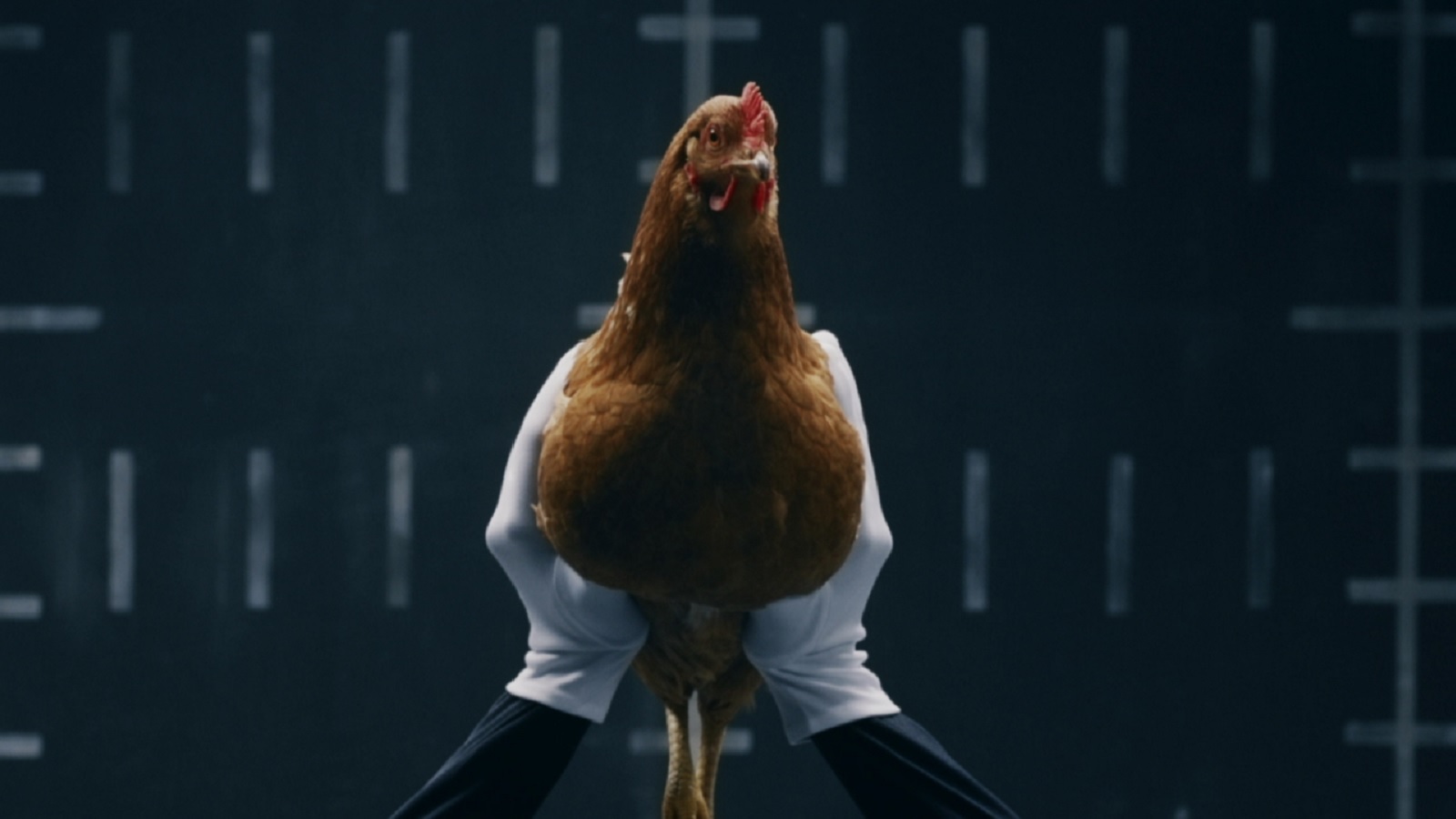At first, there’s no resemblance between the two. But, at a closer look, you can see that they have one thing in common: They are both “equipped” with the vestibulo-ocular reflex (VOR). While for the chicken this feature comes naturally, the Mercedes-Benz car was “blessed” with the reflex by artificial means. In fact, the VOR appears in humans but chickens seem to be the masters of it. This reflex allows beings to isolate their eyes’ movement from the body’s actions. In other words, this helps humans not spin when we run or dance. In the case of chickens, the VOR isolates the birds’ movement of the head, allowing them to keep their heads motionless even when their bodies move.
To promote its MAGIC BODY CONTROL® feature, Mercedes-Benz drew inspiration from chickens and their ability to keep their heads still even when they are moving. Similar to this reflex, the automaker’s system scans the road ahead of the car, sends the information to the control unit, so that the suspension can adapt accordingly. This way, the passengers can enjoy a smooth ride even though there are bumps or potholes on the road.

“When you read or hear about this technology at first, it seems like it is straight out of a science fiction book. Then again, it is Mercedes-Benz S-Class that we are talking about, and this line of cars has always been ahead of its time,” said Mercedes about the feature used to equip its S-Class. Now, let us rephrase that: “When you read or hear about the campaign created to promote the feature, it seems like it is straight out of a comedy scene.”
Developed with the help of agency Jung von Matt/NECKAR, the carmaker’s ad, simply titled “Chicken,” focuses on these birds to show just how comfortable a ride can be if the vehicle is equipped with this technology. During this week’s #ThrowBrandThursday, we are going to have a look at the ad which, in just four days since its launch, has gathered more than two million views on YouTube.
Set on the “Upside Down” song by Diana Ross, the 45-second-long video presents a few chickens which move “graciously” on the music beats. They are helped by white-gloved hands while going “through their forced humiliation,” only to deliver the brand’s message. The ad is catchy and it makes one join and continue this weird dance.
Mercedes-Benz decided to give up the usual German precision to comedy. But was the automaker the first to use this idea? Fujifilm had a similar approach to promote its X-S1 bridge camera. As a response to a Facebook user’s feedback “Unfortunately stolen from Fuji!”, the agency said: “The Mercedes spot was produced in November 2012 and shown internally at various events and in the cinema. Well before the Fujifilm commercial.” So, who was here first? The chicken or the Mercedes-Benz or Fujifilm “egg?”
The award-winning campaign was replicated dozens of times and Jaguar — one of Mercedes-Benz’s rivals — did it too. Titled “Jaguar vs. Chicken,” the ad features a lab man holding a chicken in his hands. The poor bird’s fate is tragic, but the idea behind this sad event is that the British automaker prefers “cat-like reflexes” rather than Magic Body Control. According to Business Insider, a Jaguar rep gave credit to the creative team at Mercedes, describing their own video as “an alternate, Jaguar, point of view.”
Credits:
Client: Mercedes-Benz
Agency: Jung von Matt/NECKAR
Executive Creative Director: Peter Waibel
Creative Directors: Robert Herter, Lukasz Brzozowski
Art Director: Lucas Osis
Copywriter: Nico Baumann
Account Management: Sonja Stockmann, Darek Stöhr, Fabian Kredig, Julia Körte
Agency Producers: Christoph Köhler, Sebastian Fahlbusch
Production: BIGFISH
Director: Daniel Warwick
